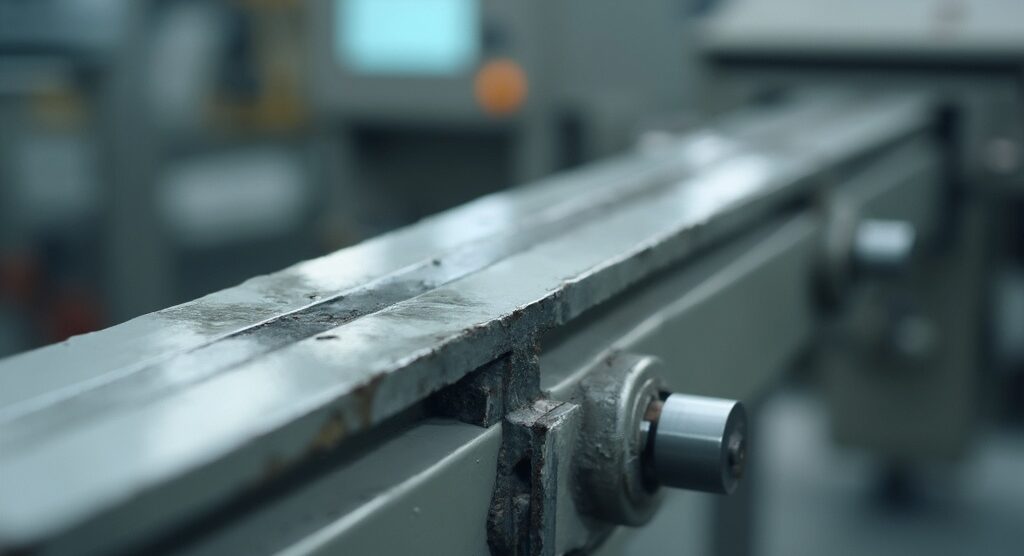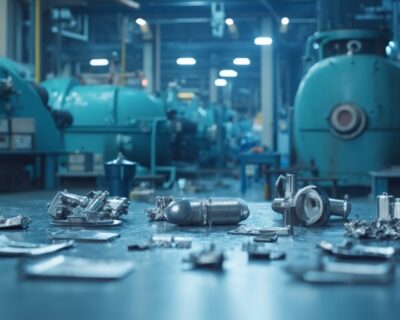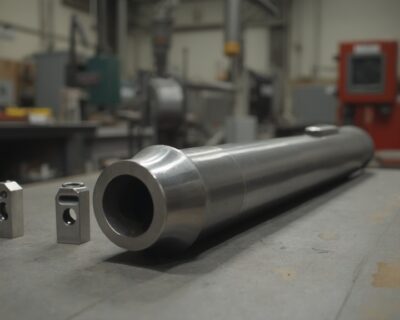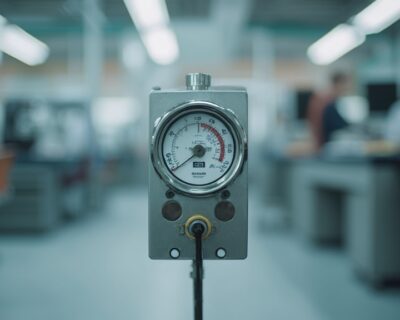Blogs

Role of Bi Metals in Modern Industrial Processes and Applications
Introduction
Bimetals, the fusion of two distinct metals or metal alloys, are transforming modern engineering with their enhanced properties and versatility. These innovative materials surpass the capabilities of individual metals, offering increased strength, superior corrosion resistance, and improved thermal conductivity. By carefully selecting compositions and utilizing advanced processing methods, manufacturers can fine-tune bimetals to meet specific demands.
In industries like aerospace and automotive, bimetals are revolutionizing the creation of components that endure extreme conditions, driven by the pursuit of materials that can operate under high temperatures and corrosive environments. The ongoing research, supported by entities such as the Australian Research Council, is paving the way for large-scale manufacturing, promising significant advancements in efficiency and performance across various sectors. As the market for advanced materials expands, bimetals are set to redefine industry standards, offering unparalleled benefits in both functionality and cost-effectiveness.
Properties and Types of Bi Metals
‘Bimetals, or bi-metals, are innovative substances created by bonding two distinct components or alloys.’. This combination results in enhanced properties that surpass the capabilities of the individual elements. Common examples include combinations like copper-aluminum, copper-nickel, and steel-brass. These pairings offer targeted advantages, such as increased strength, superior corrosion resistance, and improved thermal conductivity, making them highly versatile for various applications.
The properties of bimetals can be fine-tuned through careful selection of composition and advanced processing methods during manufacturing. For instance, researchers are working to develop new substances that can replace traditional metals with intelligent metals, such as metal matrix composites (MMCs). These advancements aim to meet the growing demand for resources that are not only cost-effective but also exhibit enhanced mechanical and tribological properties.
In practical applications, bimetals are proving to be a valuable asset. For instance, in the aerospace and automotive sectors, the application of high-entropy alloy powders and advanced additive production methods enables the formation of substances with unparalleled chemical characteristics and performance abilities. ‘This innovative approach is being driven by the need for substances that can withstand extreme conditions, such as high temperatures and corrosive environments.’.
The ongoing research and development in this field are supported by various funding sources, including the Australian Research Council and the Dyason Fellowship Program at the University of Melbourne. These efforts are paving the way for the large-scale production of bimetals, which holds promise for a wide range of engineering applications. As the market for advanced materials continues to expand, the incorporation of bimetals into production processes is poised to transform industries, providing new levels of efficiency and performance.

Manufacturing Processes of Bi Metals
The production of bi-metals typically involves several sophisticated processes including roll bonding, diffusion bonding, and casting. Roll bonding is widely employed and involves passing two sheets of material through rollers, creating a strong bond. This method is efficient and cost-effective, reducing material waste and manufacturing costs. For instance, seamless rolled rings produced through open-die forging achieve exact specifications with optimized mechanical properties and structural integrity, as highlighted by Weiss. This process not only saves time and labor but also enhances the final product’s strength and durability.
Diffusion bonding, another vital method, relies on heat and pressure to allow atomic interdiffusion at the interface. This technique forms a strong connection without liquefying the materials, ensuring the integrity and performance of the final product. The precise control of temperature and pressure is crucial in this method to achieve the desired outcomes.
Casting, particularly useful for complex shapes and structures, involves pouring molten metal into a mold where it solidifies. This method is ideal for producing intricate designs that are difficult to achieve through other techniques. Each of these methods requires meticulous control over temperature and pressure to ensure the final product meets the high standards demanded by various industries, such as aerospace, automotive, and machinery production. The integrity and performance of the final product are paramount, making these processes indispensable in the production of bimetals.

Applications of Bi Metals in Modern Industries
Bi-metals find extensive applications across various industries, including automotive, aerospace, and electronics. In automotive manufacturing, bi-metal components are crucial for engine parts where thermal expansion and mechanical strength are critical. For example, the application of advanced substances such as Nissan’s cool paint has shown efficiency enhancements by lowering exterior surface temperatures by as much as 12 degrees Celsius, which subsequently reduces the engine load and boosts vehicle efficiency.
The aerospace industry gains considerable advantages from dual-metal alloys in structural elements that need lightweight but strong substances. ‘The demand for efficient and durable power generation systems, driven by rising air travel and defense spending, has heightened the necessity for high-performance alloys and metallic substances.’. Thermal Barrier Coatings (TBCs), for example, allow engines to operate at higher temperatures, thus improving fuel efficiency and power output.
In electronics, two-metal combinations are utilized in connectors and switches, enhancing conductivity and reliability. The scientific community has made significant strides in developing biocompatible materials that operate efficiently in wet environments, which is a breakthrough for bioelectronic devices. This versatility and performance make these materials essential in modern industrial applications, meeting evolving needs and regulatory standards across various sectors.

Advantages of Using Bi Metals in Industrial Processes
‘The incorporation of dual metals in industrial applications provides notable advantages, such as improved performance, cost effectiveness, and weight reduction.’. By combining distinct metals, manufacturers can create materials with superior mechanical properties that enable lighter designs without compromising strength. This is particularly advantageous in sectors like aerospace and automotive, where weight reduction is crucial for performance and fuel efficiency. Furthermore, composite metals show enhanced durability against wear and corrosion, prolonging the lifespan of parts utilized in challenging settings, like oil and gas platforms and chemical processing facilities.
For example, the use of titanium in medical implants like artificial joints and dental fixtures leverages its biocompatibility and corrosion resistance, ensuring durability within the human body. In the automotive industry, titanium’s lightweight and high-strength characteristics are utilized in high-performance vehicle exhaust systems and suspension components. Similarly, in the military sector, titanium’s strength and durability make it an ideal choice for armored vehicles and aircraft.
The tactical application of dual metals also leads to considerable cost reductions in production and upkeep. This is evident in the chemical processing industry, where titanium’s resistance to aggressive chemicals reduces the frequency of replacements and repairs. Moreover, the growing demand for advanced materials in electric mobility and luxury goods is driving companies to expand their operations and invest in innovative production technologies, such as automated plating lines, to meet market needs efficiently.
In conclusion, the use of dual metals across various sectors not only improves product performance and durability but also promotes sustainable and economical production methods.

Challenges and Future Trends in Bi Metal Technologies
Despite their numerous advantages, the use of bi-metals presents certain challenges, including difficulties in recycling and potential issues with thermal expansion mismatches. As industries continue to evolve, there is a growing trend towards developing new bi-metal compositions that can better meet the demands of modern applications.
Innovations in Manufacturing Techniques: Recent advancements in manufacturing techniques are addressing some of these limitations. For instance, cutting-edge composites are being explored in sectors such as automotive, aerospace, and construction, where lightweight and durable substances are in high demand. Events such as CompositesWorld’s CW Tech Days showcase the latest trends and advancements in tooling technologies and substances that will aid in making bi-metal technologies more efficient and sustainable.
Substance Science Breakthroughs: The advancements in substance science are also crucial. New bi-metal compositions are being engineered to overcome the current issues related to thermal expansion mismatches. Companies are increasingly focusing on creating compositions that offer enhanced performance and sustainability.
Environmental Impact and Sustainability: The environmental impact of traditional composite manufacturing processes is under scrutiny. Cyclic Materials, for example, has developed proprietary technologies like Mag-Xtract™ and hydrometallurgy to recycle valuable materials from end-of-life products, emphasizing the importance of a circular supply chain. This approach not only reduces dependence on offshore sources but also significantly cuts down the environmental footprint.
Market Trends and Demand: The market for bi-metals is poised for growth, driven by increased awareness of their benefits across various industrial sectors. In North America, the accelerated production and usage of stainless steel and associated goods are expected to foster market growth. Similarly, the Asia-Pacific region, led by China, is experiencing a surge in demand due to rapid urbanization and infrastructure development.
As these innovations and market trends converge, the future of bi-metal technologies looks promising. By addressing current limitations, industries can look forward to more efficient and sustainable solutions, aligning with broader environmental and economic goals.

Conclusion
The exploration of bimetals reveals their significant potential to transform various industries through enhanced properties and advanced manufacturing processes. The combination of distinct metals not only improves strength, corrosion resistance, and thermal conductivity but also allows for tailored solutions that meet specific application needs. This versatility is particularly evident in sectors like aerospace and automotive, where the demand for materials capable of withstanding extreme conditions is ever-increasing.
Manufacturing techniques such as roll bonding, diffusion bonding, and casting play a crucial role in producing high-quality bimetal components. Each method offers distinct advantages, ensuring that the final products meet rigorous industry standards while optimizing efficiency and cost-effectiveness. As research continues to advance, particularly with support from institutions like the Australian Research Council, the pathway to large-scale production of bimetals is becoming clearer, promising to enhance operational capabilities across sectors.
Despite the notable benefits, challenges remain, including recycling difficulties and thermal expansion mismatches. However, ongoing innovations in materials science and manufacturing techniques are addressing these issues, paving the way for more sustainable and efficient bi-metal applications. The growing market demand, particularly in regions like North America and Asia-Pacific, underscores the importance of bimetals in meeting the evolving needs of modern industries.
In summary, the integration of bimetals into manufacturing processes not only enhances product performance and durability but also aligns with sustainable practices. As industries continue to embrace these innovative materials, the future of bimetals appears bright, setting the stage for continued advancements in engineering and technology.




